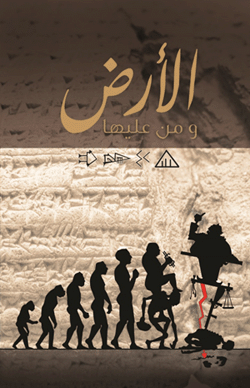New HLRN Publication: “The Land and Its People”

All intimate relationships are complex. The one that links the peoples of Middle East/North Africa to their lands is no less so. That association is ancient and contemporary, material and spiritual, personal and collective. The people’s relationship to their lands is also primordial and, at once, the veritable root of high culture. Millennia of music, literature and poetry have conveyed the intricate and organic interaction of the region’s indigenous pastoralist and urban dweller with the earth. Whether subtle or hyperbolic, the expression of this link of land and people underlies most aspects of life: economic, political, ethical and gastronomical. It is the land that also binds and bonds people through their social production and national identities.
The human rights dimensions of land are the grounding features of HLRN’s newest publication The Land and Its People (in Arabic: الأرض ومن غليها). International law makers have evaded these dimensions, except for the land as a subject of property rights and national sovereignty. As of this writing, no configuration of states has yet to codify a “human rights to land.” However, the narrative contained in this new book gives testimony from the civil society perspective to the multiple dimensions of land and its constituent resources as they relate to human needs and, therefore, human rights.
At the core of this notion of human rights to land are the concepts of equity and justice in the use and administration of land and its constituent resources. The source of this notion in human rights law is most-clearly grounded in the specific human rights to an adequate standard of living, adequate housing and food, as the land and its constituent resources typically are essential to realize each. Human rights methodology recognizes also that each human right imposes corresponding obligations on public bodies and government officials as the supposed guardians of all public resources.
The human rights-based administration of land as a public trust is the premise that governance largely has failed to operationalize over much time and territory in the Middle East/North Africa (MENA) region. Recent awakenings that have swept across MENA, and still promise to transform the region, have issued a call for fundamentally redefining the state and its return to the original protective role and purpose. In each of the affected countries, youth, farmers, students, the press, human rights organizations and civic minded citizens of all kinds have echoed the demand for people-centered management of land and resources.
This HLRN monograph, edited by Rabie Wahba, comes at precisely the right time. It culminates a vision that has been developing for years leading up to the current Arab awakening. Habitat International Coalition’s Housing and Land Rights Network also has long sought to apply equity and human rights in land and housing policies and practices. Since 2009, its Middle East/North Africa program has hosted four rounds of its regional Land Forum as a platform for researchers and activist across the Arabic-speaking world to develop their specialization on matters related to human rights and the land. This collective action and mobilization of thought and knowledge have raised both the fundamental philosophical questions, as well as many technical aspects toward articulating an alternative vision that reflects the peoples’ relationship to, dependence upon and equitable management of the land and its constituent resources. Four rounds of the Land Forum have provided the fertile ground for this compilation as an indispensable step in realizing that vision.
Each of the participants has contributes a valued aspect of the prismatic view of land as a human rights issue across the region. HLRN trusts that this monograph constitutes one of a much longer effort and deeper analysis that contributes to equitable problem solving in this culturally splendid and diverse region, for the land and its much-deserving peoples.
Download الأرض ومن عليها[in Arabic].
|